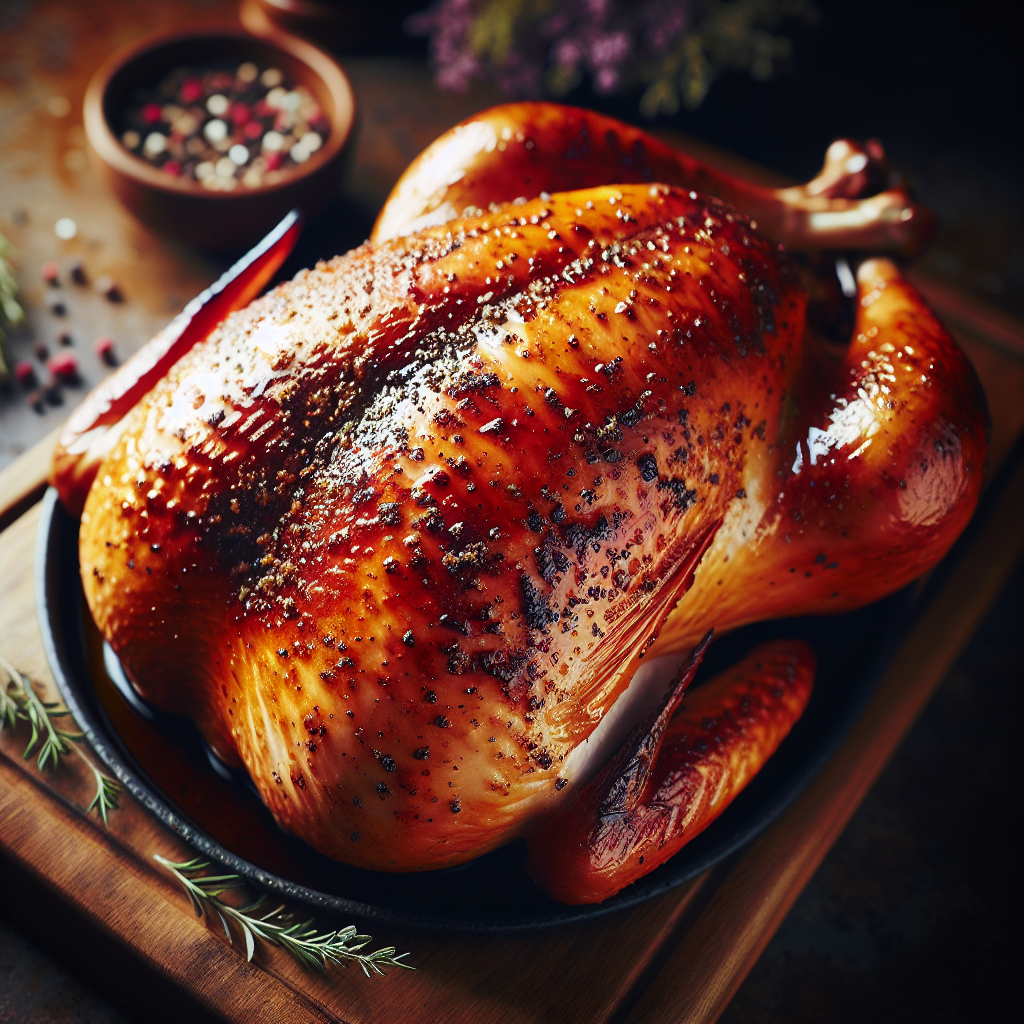If you’ve ever cooked a turkey, you know that one of the biggest challenges is keeping the breast meat moist and juicy. There’s nothing worse than slicing into a dry, flavorless turkey breast.
But fear not, because in this article, we’re going to share some tried-and-true techniques for ensuring that your turkey breast comes out perfectly succulent every time.
From choosing the right turkey breast to seasoning secrets and roasting techniques, we’ve got you covered. So let’s dive in and learn how to keep that breast meat moist and delicious!
Choosing the Perfect Turkey Breast for Your Meal
When it comes to choosing the perfect turkey breast for your meal, there are a few factors to consider. First, you’ll want to decide whether you want a bone-in or boneless turkey breast. Bone-in breasts tend to have more flavor, but boneless breasts can be easier to carve. Next, think about the size of the turkey breast.
If you’re feeding a large crowd, you’ll want a larger breast, but if it’s just for a small gathering, a smaller breast should suffice. Finally, consider whether you want a fresh or frozen turkey breast.
Fresh turkey breasts are often considered to have a superior flavor, but frozen turkey breasts can be more convenient as they can be stored for longer periods of time.
Cooking tips from Famous Chefs
Types of Turkey Breast
When it comes to the types of turkey breast, there are a few options to choose from. One of the most popular options is the whole turkey breast, which includes both white and dark meat.
This can be a great option if you want a variety of flavors and textures. Another option is a boneless turkey breast, which is perfect for those who want easy carving and a more uniform texture. Additionally, there are turkey breast roasts available, which are boneless and typically come pre-seasoned or stuffed with flavorful ingredients.
Ultimately, the type of turkey breast you choose will depend on your personal preferences and the specific dish you’re planning to make.
To Brine or Not to Brine: Preparing Your Turkey Breast
When it comes to preparing your turkey breast, one of the big decisions you’ll need to make is whether or not to brine it. Brining is the process of soaking the turkey breast in a saltwater solution, which helps to enhance the flavor and moisture of the meat.
If you choose to brine your turkey breast, it’s important to understand the different brining methods. One method is the wet brine, where the turkey is fully submerged in a mixture of water, salt, and other flavorings.
Another method is dry brine, where the turkey is coated in a salt and seasoning mixture and left to sit in the refrigerator overnight.
Alternatively, if you prefer not to brine your turkey breast, there are alternative preparations that can still result in a flavorful and juicy final product.
Seasoning Secrets for a Flavorful Turkey Breast
Seasoning is key when it comes to bringing out the delicious flavors of your turkey breast. One decision you’ll need to make is whether to use a dry rub or a wet rub. A dry rub consists of a mixture of herbs, spices, and other seasonings that are rubbed onto the surface of the turkey breast.
This method allows the flavors to penetrate the meat and create a delicious crust when it is roasted.
On the other hand, a wet rub involves creating a paste-like mixture by combining herbs, spices, and liquids such as olive oil or lemon juice. This mixture is then spread onto the turkey breast, creating a flavorful coating as it roasts.
Additionally, you can experiment with DIY seasoning blends by combining different herbs, spices, and aromatic ingredients to create a custom flavor profile. Don’t forget about marinating techniques, which involve soaking the turkey breast in a flavorful marinade to infuse it with additional tastes and aromas.
Roasting Techniques: Getting That Perfect Golden Brown
Roasting is the traditional method of cooking a turkey breast and can result in a beautiful golden brown exterior and juicy interior. To achieve this, it’s important to follow a few key techniques. First, make sure to preheat your oven before roasting the turkey breast.
This ensures that the turkey cooks evenly and that the skin becomes crispy. Next, choosing the right pan is crucial. A roasting pan with a rack allows for better air circulation and helps the turkey breast cook more evenly.
Additionally, using a pan with tall sides can help prevent any juices from spilling over and causing a mess in your oven. Finally, proper roasting techniques involve basting the turkey breast with its own juices or a flavorful liquid, which helps to keep the meat moist and flavorful.
Temperature Tips: Ensuring a Juicy Turkey Breast
Temperature is a critical factor in ensuring that your turkey breast is juicy and cooked to perfection. The best way to determine the internal temperature of the turkey breast is by using a meat thermometer. Insert the thermometer into the thickest part of the breast, being careful not to touch the bone, and check the temperature.
The USDA recommends cooking turkey breast to an internal temperature of 165°F (74°C) for safety. This ensures that any harmful bacteria that may be present in the meat are killed. Once the turkey breast reaches the desired temperature, it’s important to allow it to rest for a few minutes before carving. This allows the juices to redistribute throughout the meat, resulting in a juicier final product.
Cooking tips from Famous Chefs
Tent or No Tent: The Truth About Covering Your Turkey
One question that often comes up when roasting a turkey breast is whether or not to cover it with a tent made of aluminum foil. There are benefits to using a tent, as it can help prevent the skin from becoming too dark or even burned.
The tent traps some of the steam, which helps to keep the meat moist and tender. However, there may also be times when it’s best to remove the tent. Towards the end of the cooking time, removing the tent can help to crisp up the skin and give it a beautiful golden brown color.
Additionally, there are alternative methods of covering the turkey breast, such as using a lid if you’re using a covered roasting pan or placing a baking sheet on top of the breast to shield it from direct heat. Ultimately, the decision to tent or not to tent will depend on your personal preferences and the desired outcome for your turkey breast.
Basting Basics: Keep It Moist and Delicious
Basting is a technique that involves periodically spooning juices or other flavorful liquids over the turkey breast as it roasts. The purpose of basting is to keep the meat moist and prevent it from drying out. The juices that are spooned over the turkey breast not only help to add flavor but also create a barrier that seals in moisture.
To baste the turkey breast, simply use a basting brush or spoon to carefully drizzle the juices over the surface of the meat. This can be done every 30 minutes or so throughout the cooking process. However, it’s important not to overdo it, as opening the oven frequently can cause the temperature to fluctuate and result in uneven cooking.
Troubleshooting Common Turkey Breast Pitfalls
Even with careful preparation and cooking, it’s possible to encounter some common pitfalls when it comes to turkey breast. One common issue is a dry and overcooked turkey breast. To prevent this, make sure to monitor the cooking time and internal temperature carefully.
Removing the turkey breast from the oven as soon as it reaches the recommended internal temperature of 165°F (74°C) will help to ensure that it doesn’t dry out. Another common problem is unevenly cooked turkey breast, where parts of the meat may be overcooked while others are undercooked.
To avoid this, make sure to use a meat thermometer to check the temperature in multiple places throughout the breast.
Last but not least, burnt or darkened skin can sometimes occur if the turkey breast is roasted at too high of a temperature or for too long. To prevent this, make sure to follow the recommended cooking temperature and time guidelines and consider using a tent or other methods of covering to protect the skin.
In conclusion, preparing a turkey breast for your meal requires careful consideration of factors such as the type of breast, whether to brine or not, seasoning options, roasting techniques, temperature monitoring, covering methods, and basting.
By following these tips and techniques, you can ensure that your turkey breast is flavorful, moist, and cooked to perfection. Don’t be afraid to experiment with different flavors and methods to create a turkey breast that will impress your guests and make your meal truly memorable.
Get your roaster here….
Happy Cooking!



